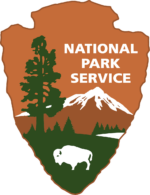Diversity, Equality, Cultural Competency
To ensure that voices are amplified and that the stories of everyday people are empowered amidst opposition, Teaching for Change has created the Civil Rights Teaching website. The website offers lessons, handouts, resources, and news to implement in classroom teaching to engage students in their own knowledge and community activism. Teaching for Change is an active partner in the Freedom Movement Educational Initiative.
PFLAG has curated resources for those new to the conversation surrounding gender identity. These resources include national publications, online academies, books, films, and special topics.
In celebration and honor of Native Heritage Month, the National Educational Association (NEA) offers year-round resources to share the narrative of Indigenous People groups.
Resources include lesson plan units for children grades Kindergarten through 12 that focus on history, accurate representation, Thanksgiving lesson plans from the Native American perspective, background resources, printables/posters, videos, and recommended readings. The curated collection is in partnership with organizations centered in social justice and advocacy.
NEA Note: “Educators should be mindful of cultural appropriation when teaching about other cultures and understand that Native American students in class may experience lessons differently than non-Native students.”
A Native woman-led racial and social justice organization, IllumiNative has created free resources (in partnership with the National Indian Education Association and Amplifier) that increase the visibility of and challenge the negative narratives of Indigenous peoples.
Resources available include youth and adult publications centered in advocacy, awareness, and research. Lesson plans include remote learning opportunities that explore the work of Indigenous leaders and changemakers in digital tool formats for grades PreKindergarten through 8th grades.
Created in August of 2016 by CEO Aliyah Griffith, Mahogany Mermaids promotes awareness and advocacy that create opportunities for children and youth of color to explore and join the aquatic sciences.
A primary goal of Mahogany Mermaids is to connect, impact, and outreach to as many students and youth as possible. To achieve this, they have offered education tools via their website to build ocean awareness and conservation efforts for students 4th – 12th grade. Their resource page also offers uniquely created activities connected to national aquariums as well as links to outside resources.
In commemoration of Bebe Moore Campbell National Minority Mental Health Awareness Month, Mental Health America (MHA) sponsored the creation of the 2024 BIPOC Mental Health Toolkit.
This toolkit offers fact sheets, outreach ideas, sample newsletters, social media tools, and more to better support youth in our communities.
In commemoration of Bebe Moore Campbell National Minority Mental Health Awareness Month, Mental Health America (MHA) sponsored the creation of the 2024 BIPOC Mental Health Toolkit.
This toolkit offers fact sheets, outreach ideas, sample newsletters, social media tools, and more to better support youth in our communities.
In the following report, Hanover Research examines literature and case studies on engaging diverse families in public, K12 settings. It focuses in particular on the experiences and needs of large, urban public school districts, and on the experiences and needs of African-American and Hispanic families.
Explore Black History Month with your students using lessons, podcasts, activities, and primary sources curated by Smithsonian History Explorer.
Examine collections of the Museum’s key resources on major themes in American history and social studies teaching. Additional resources can be found in the main search areas of their website.
“Separate but equal” laws segregated society and culture in the United States for the first half of the 20th century. After World War II, the tide began to turn and one place where Americans saw a change was in professional sports. In 1946, African American baseball player and military veteran Jackie Robinson became the first black man to play on a white team in a segregated league. With support from his wife and community, he broke that “color barrier” during spring training in Daytona Beach, Florida, at the City Island Ballpark.
Robinson earned the title Rookie of the Year in 1947, played in the World Series in 1955, and was a passionate Civil Rights activist when his athletic career ended. The “City Island Ballpark” is listed on the National Register of Historic Places for its association with him and renamed in his honor. This lesson explores Jackie Robinson’s life and the events of 1946, racism and “Jim Crow,” pop culture’s influence on a nation of laws, and the historic beachfront ballpark.
This lesson can be used in U.S. history, social studies, and other curricula that examine African American history and civil rights in the United States following World War II.
Commemorate Black History Month in your classroom with lesson plans and resources that cover topics ranging from civil rights events to discussions about race in current events. These lessons are appropriate for history, ELA and social studies classrooms, and include resources for students in middle or high school.
The Scholastic Storyworks archives bring you some of our most beloved stories for Black History Month, from a powerful play about a kid who led a series of sit-down strikes to a gripping nonfiction article about the co-discoverer of the North Pole. We hope you enjoy sharing these Black stories with your students.









